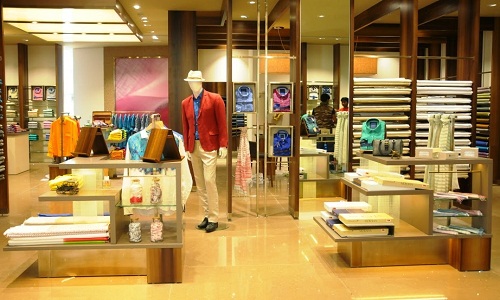"Linen is a designers’ delight because of its matchless properties. However, in India it is still considered a niche, elite fabric and consumption is low as the vast majority still don’t use it. Linen is basically a stem fibre, it wrinkles very easily. The important property of linen is its comfort. It absorbs moisture 20 times more than its actual weight without being uncomfortable to the user. One of the biggest advantage is that linen is naturally anti-allergic and anti-bacterial."

Linen is a designers’ delight because of its matchless properties. However, in India it is still considered a niche, elite fabric and consumption is low as the vast majority still don’t use it. Linen is basically a stem fibre, it wrinkles very easily. The important property of linen is its comfort. It absorbs moisture 20 times more than its actual weight without being uncomfortable to the user. One of the biggest advantage is that linen is naturally anti-allergic and anti-bacterial.
Deepa Chandran, GM, Aditya Birla Fashion & Retail says the Indian linen market is growing at 10 per cent CAGR. Currently 70 per cent linen yarn is imported.“Premium apparel brands import high quality linen. For mediocre usage, Indian fabrics are used. There is a huge potential for making premium fabrics and yarn in India,” he says. The price of linen fabrics is comparatively higher than cotton and viscose. Today, its market price stands at Rs 600 per kg. Another interesting feature of linen is that it can be blended easily with cotton, polyester, viscose and many other fabrics. Pure linen’s retail price in the market starts from Rs 1,200 per metre, while blended linen is available in the range of Rs 400 upwards depending on the ratio of linen.
Basically a European fibre, flax from which linen is made is grown in Russia, Canada, France, etc. It requires certain climatic conditions to grow at its best. Russia has made good stride in linen fibres production. European countries largely grow the fibre for exports. European fibres are considered the best, as they have long length. The longer the fibre, the better the quality of fabric, India and China too have made attempts to grow it. China grows a lot but it is not considered the best quality fibre.
In 60s and 70s, linen was synonymous with home furnishing but with experimentation and usage in the last 10-15 years, linen usage has grown in fashion and apparel sector in a big way. Giving a perspective on Indian market, Chandran says, “Linen is used in trousers and shirts majorly. A pure linen suit can cost up to Rs 16,000, 100 per cent linen shirt can cost between Rs 3,000 to Rs 8,000. Designers like to use linen a lot, blends have a good market also.”
Aditya Birla is operating through 42 countries, having diverse businesses. Linen fabric for Aditya Birla is produced in Kolkata. “Jayashree Textiles exclusively produces it for our in house. We have exclusive linen stores all across the country, Linen fabrics by Aditya Birla Group is retailed through 121 exclusive stores and over 1,000 MBOs on a pan-India basis. We are the largest linen producer despite the fact the entire raw material is imported,” he explains Chandran.
Chandran says there are many players in the market currently who produce the fabric in India. The fabric is suitable for Indian weather conditions. Talking about the concerns facing the linen market in India, Chandran says, “The level of awareness is low and fakes exist. Many blends are sold as pure linen fabrics, which do not give full advantage to the user. Buyers who understand linen contribute to the growth of the fabric in the country. The only challenges are cost and presence of similar looking fabric, which are sold at the same prices as pure linen. Indeed, it is difficult to identify pure linen from look a likes.”
Opportunities galore
There is a huge shift in usage of linen from home furnishing to fashion in the last 20 years. The presence of many global brands and international tourism will contribute immensely towards linen’s growth in India. The fabric has a lot of potential and India can capitalise on it.













